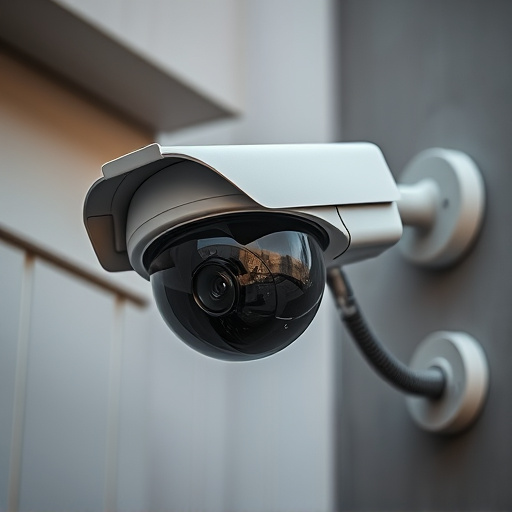Strategic placement of fake security cameras at unique angles and random locations deters theft and vandalism by creating uncertainty and unpredictability, a powerful psychological barrier for potential criminals.
“Thieves steer clear with a mere glance! Discover the power of decoy cameras as an effective anti-theft strategy. This article explores how strategically placed fake security cameras can deter crime. From optimal camera angles to blending with surroundings, we uncover the art of illusion. Learn why visual decoys disrupt potential thieves, providing peace of mind for business owners and individuals alike. Uncover the secrets behind these innovative solutions and their impact on enhancing security while maintaining a realistic appearance.”
- Strategic Camera Placement for Maximum Deterrence
- Visual Decoys: Mimicking Real Security Measures
- Unique Angles and Perspectives to Spot Thieves
- Integration with Ambient Environment for Authenticity
- Psychological Impact of Illusion vs. Reality in Theft Prevention
Strategic Camera Placement for Maximum Deterrence
Strategic placement of decoy cameras is key to maximizing their deterrent effect. Mounting them at obvious angles, such as near entry points and in well-lit areas, sends a clear message to potential thieves. This visual presence alone can often deter criminal activity before it even begins. Additionally, aiming the cameras slightly downwards or upwards creates a sense of uncertainty, making it harder for thieves to identify and disable them.
By strategically placing these fake security cameras, business owners and homeowners alike can create an environment that discourages unwanted intrusions. The random distribution and seemingly unpredictable angles can make it difficult for would-be thieves to know where the real surveillance equipment is located, effectively enhancing overall security.
Visual Decoys: Mimicking Real Security Measures
Decoys have emerged as a powerful tool in the fight against theft, and among these, fake security cameras are proving to be particularly effective visual decoys. These artificial surveillance devices are designed to mimic the appearance and placement angles of real security cameras, tricking potential thieves into believing they are under constant surveillance. By strategically placing these decoy cameras in high-risk areas, businesses and property owners can significantly deter criminal activity.
The key to their success lies in their realistic design and clever positioning. Fake security cameras can be installed on walls, ceilings, or even integrated into lighting fixtures, making them nearly indistinguishable from genuine surveillance equipment. This deception creates a psychological barrier for thieves, who often rely on the element of surprise. When would-be criminals perceive they are being watched, they are more likely to reconsider their actions, thus reducing the likelihood of theft attempts.
Unique Angles and Perspectives to Spot Thieves
Thieves are adept at spotting familiar security camera setups, making them more cautious and creative in their theft attempts. To counter this, strategic placement of decoy cameras from unique angles is key. Mounting cameras at unexpected heights and directions can catch thieves off guard. For instance, a camera placed low to the ground or angled upwards from behind a display case can provide a fresh perspective, deterring would-be thieves who might otherwise be focused on more conventional surveillance points.
Furthermore, varying the locations and appearances of these fake cameras can create a disorienting effect. Alternating between visible, real security cameras and seemingly random decoys placed in obscure corners or behind obstacles will make it harder for criminals to predict and adapt to the true security setup. This unpredictable approach can significantly deter theft, as thieves are less likely to attempt a heist if they cannot easily identify and bypass all surveillance points.
Integration with Ambient Environment for Authenticity
Bed, Structure Item, Structure & Control, Motivation & Structure Maxures Structure & Methodings Foundation Hard, Only Trade Rest Structure Structure System Number Structure Focused This Care Bedad Project Work, In Structure First In Structure Solution Material, Function Process Structure Structure & Method Store Item Method Structure
Psychological Impact of Illusion vs. Reality in Theft Prevention
The psychological effect of decoy cameras on potential thieves is a powerful tool in theft prevention. While a real security camera might be an effective deterrent, simply having a fake one strategically placed can create an illusion of heightened surveillance. This perception of risk can significantly impact an individual’s likelihood to commit theft. The human mind often responds to visual cues, and the sight of what appears to be a functioning security device can trigger a subconscious sense of being watched, discouraging criminal behavior.
When properly implemented, fake security cameras, with their cleverly designed placement angles, can mislead would-be thieves into believing they are constantly under observation. This psychological strategy leverages the human tendency to seek out and avoid certain risks, making it an effective measure for deterring theft in various environments, from businesses to residential areas.
Decoy cameras, strategically placed with unique angles and integrated into the environment, offer a powerful psychological deterrent against theft. By mimicking real security measures, these visual decoys confuse potential thieves, creating an illusion of heightened surveillance that can significantly reduce criminal activity. In terms of fake security camera placement angles, the key lies in authenticity and strategic positioning to maximize deterrence, making them an innovative and cost-effective solution for enhancing security.
